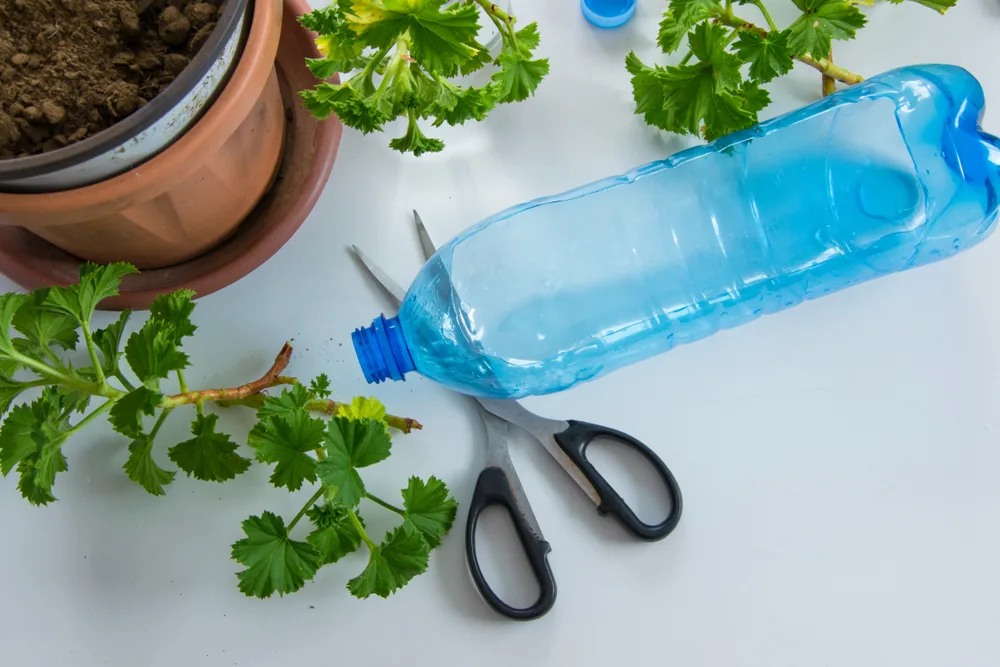Drip irrigation is the method gardeners use when they want to save water and ensure their plants receive a consistent supply of moisture.
While store-bought drip systems can be costly and complex to set up, there’s a straightforward DIY fix that you can put together in minutes using plastic bottles.

This guide will walk you through making your own drip irrigation system with plastic bottles, so you can water your plants efficiently and effectively without breaking the bank.
Materials Required:
- Plastic bottles (2-liter or 1-liter)
- Sharp scissors or knife
- Drill or nail Hose or tubing (optional)
- Water
Step 1: Gather Your Supplies
First, gather your materials. You’ll need plastic bottles, preferably 2-liter or 1-liter ones, along with sharp scissors or a knife to cut them. You’ll also need a drill or a nail to make holes in the bottles for the water to drip out.
Step 2: Prepare the Bottles
Using the scissors or knife, carefully cut off the bottom of each plastic bottle.
This will be the reservoir for holding water.
Alternatively, you can leave the cap on and drill or poke small holes into it instead of cutting off the bottom completely. This allows you to control the water flow more easily.
Step 3: Make Holes in the Caps
If you’ve chosen to keep the caps on the bottles, use a drill or nail to make small holes in them. These holes will be where the water drips out onto your plants.
Make sure to space the holes evenly across the cap for even watering.
Step 4: Install the Bottles
Now, it’s time to place the bottles in your garden.
Dig a hole near the base of each plant you want to water and bury the bottles upside down, leaving the neck sticking out above the soil.
Alternatively, you can hang the bottles from stakes or trellises using string or wire.
Step 5: Fill the Bottles with Water
Fill each bottle with water, either through the bottom or by pouring water into the top if you’ve left the cap on.
As the soil around the bottles dries out, water will slowly seep out of the holes in the caps, providing a steady supply of moisture directly to your plants’ roots.
Step 6: Monitor and Adjust
Keep an eye on your drip system and check the soil moisture regularly.
Depending on factors like temperature and plant type, you may need to tweak the watering schedule to ensure optimal growth.
You can also experiment with different bottle sizes and hole arrangements to customize the system to your needs.
With these simple steps, you can create your own drip irrigation system using plastic bottles in just minutes.
Not only is this DIY solution easy and cheap, but it’s also a green way to save water and keep your plants thriving all season long. Give it a shot and watch your garden flourish!
